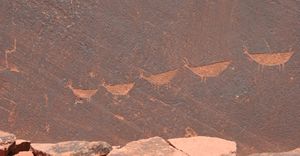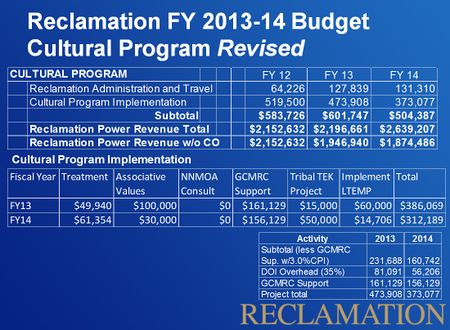Difference between revisions of "CULTURAL"
(change wording) |
|||
| Line 76: | Line 76: | ||
|- | |- | ||
|style="color:#000;"| | |style="color:#000;"| | ||
| + | * [[Media:2013zebratail.finalannualreport.withedits.pdf|2013 Zebratail- final annual report-withedits]] | ||
* [[Media:2012 SPC Annual Report final rev.docx| Paiute 2012 Annual Monitoring Report]] | * [[Media:2012 SPC Annual Report final rev.docx| Paiute 2012 Annual Monitoring Report]] | ||
* [[Media:2012 Monitoring Report.pdf | Hopi 2012 Annual Monitoring Report]] | * [[Media:2012 Monitoring Report.pdf | Hopi 2012 Annual Monitoring Report]] | ||
Revision as of 13:18, 16 January 2014
- USGS Cultural Resources Link USGS Cultural Resources Link
|
|
CULTURAL RESOURCES--The lower reaches of Glen Canyon and the river corridor through Grand Canyon National Park, Arizona, have been used by humans for at least 13,000 years. Today, at least nine contemporary Native American Tribes claim traditional cultural ties to this area. Grand Canyon National Park contains more than 4,000 documented prehistoric and historic sites, and about 420 of these sites are located in proximity to the Colorado River. The lower reaches of Glen Canyon contain an additional 55 sites. In addition to archaeological sites, cultural resources along the Colorado River corridor include historic structures and other types of historic properties, as well as biological and physical resources that are of traditional cultural importance to Native American peoples such as springs, unique landforms, mineral deposits, native plant concentrations, and various animal species |
| Cultural Resources Library (Motions) |
TBD (TBD) |
TBD (TBD) |
|---|
|

